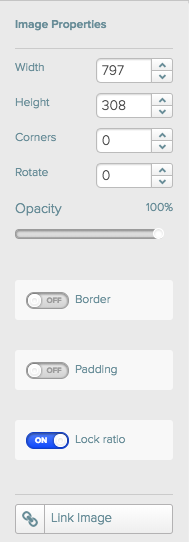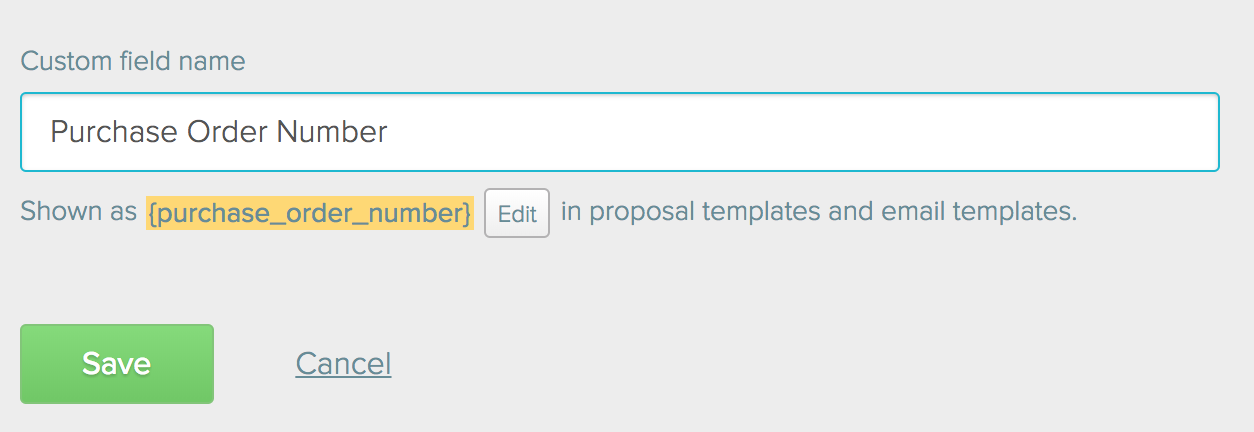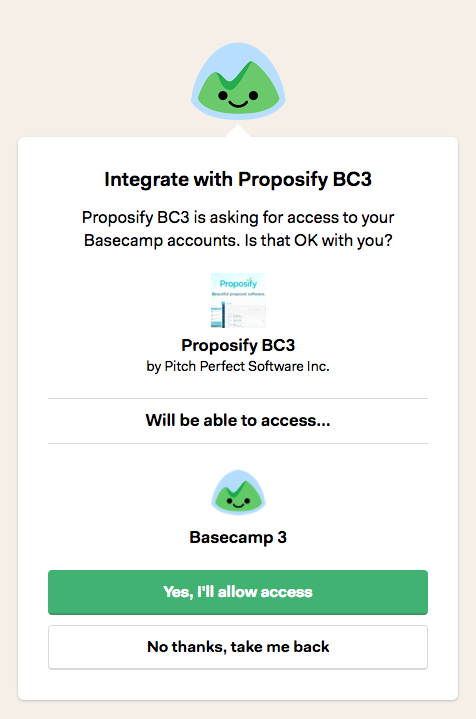
For more than a year, our team has been grinding away, building the next evolution of Proposify. It’s fast, smooth, and easier to use, plus it comes loaded with some cool new features to celebrate. We can’t wait for you to try it.
You may have been wondering what we’ve been up to here at Proposify, and I can tell you we’ve been busy Canadian beavers.
Our razor-sharp team took everything that was awesome about Proposify, innovated where we needed improvements, added an entirely new engine, and built the all-new Proposify 2 from the ground up. It’s faster, easier-to-use, more scalable, and it comes packed with a few new features, with more planned to launch later this year.
Proposify 2 is a completely separate product from the existing Proposify (1.0). If you’re already a Proposify customer, you won’t have to pay extra to get the new version, but your data will need to be migrated over.
In the beginning, you can choose when you want to migrate, but eventually everyone’s account will be moved to Proposify 2 (we’ll let you know when that time comes).
Read on to learn more about why Proposify 2 is such a big deal and to get answers to your questions before you make the switch.
A beautifully simpler editing experience
We love feedback from our customers; when they talk, we listen.
One of the most consistent pieces of feedback we’ve heard over the years is that our editor can sometimes be clunky and hard to use.
Easily creating well-designed proposals is an important part of why Proposify exists and one of our biggest value propositions, so if people find editing difficult, that’s a problem.
While it’s extremely difficult to make an editor that everyone loves universally, that hasn’t stopped us from trying. We set out to design a simpler editing experience that’s on par with Medium, Canva, and Apple Pages.

Contextual properties
Borrowing from Pages, the new editor has a contextual sidebar, so instead of hiding properties like font size or shape colour behind right clicks and modal windows, everything now appears in context. If you click on a text box, you see the properties for text boxes. If you click on an image, you see the properties for images, right there.

If you’re editing a pricing table row, everything you need to customize the table appears in the contextual menu. Tables are much more flexible than before—and we plan to make them even more flexible—so you can add tiered pricing, have line-item discounts, and more.

We’re even working on the ability to apply Photoshop-style filters to images and allow cropping. There’s a ton of other improvements you’ll eventually start seeing in the editor so stay tuned; this is just the beginning!
Dependable text editing and pasting
Building a bug-free text editor is HARD. We could dedicate our entire development team to just working on our text editor, and it still wouldn’t be perfect.
Thankfully, someone else has already done the hard work for us. With Proposify 2 we are switching our text editor to use an off-the-shelf WYSIWYG editor from the team at Froala.

Instead of trying to reinvent the wheel, or wrestle with paste-from-Word bugs, we wanted to use our development resources to build a better sales and proposal app.
Froala allows us to do that. Their text editor is very solid, used by some of the biggest brands in the world. They’ve made it easy for us to extend what they’ve done, building plugins on top of Froala. The benefit to you? A more dependable, less buggy text editing experience.
Outside of the editor, you’ll see a more polished interface everywhere in Proposify 2, from managing templates to viewing metrics. The entire product looks and feels better.
A more solid, scalable tech infrastructure
In addition to a new and improved user interface, the code that powers Proposify has also had an overhaul.
Jonathan Down, our CTO, wanted to use a modern Javascript framework like Ember or Angular, but doing so would require rewriting the entire product from scratch, including our server-side and database.
As a product company, we want to keep moving forward. So instead, Jonathan went with a more iterative approach, essentially creating his own JS framework he calls Cinder.
The benefits of using this framework are massive:
Speed
Using the new HTML5 API, local storage, session storage, and client-side templating, enables sending/receiving requests to the server 2 to 3 times faster. Proposify 2 feels smoother; more like using a native app and less like a website.
Scalability
The new technology we’re using for Proposify 2 allows us to build a foundation to make even more improvements in the future. We’re using a responsive CSS framework (Bootstrap), and eventually, our editor will be mobile-friendly and touch-screen compatible — you’ll be able to make edits to your proposals on the go using your phone or tablet.
Proper templating means we can build new features faster, cutting down on development time, and eventually localize the app so that in the future we can offer the product in multiple languages.
There’s a lot more on the technical side I could talk about, but the bottom line is: Proposify 2 is built for the future to allow many thousands of new customers while keeping the app fast, stable, and secure for everybody.
Automate your proposal process using custom fields and variables
This has been on our list of customer suggestions for years, but for one reason or another, it’s never been at the top of our priority list. Over time, the feedback became deafening so we decided the first big feature of Proposify 2 would be custom fields and variables.
What are they you may ask?
By default Proposify allows you to enter proposal details like the proposal name, due date, and client contact information, but many people want to add their own fields and then have those fields auto-populate their proposal without needing to manually enter it all in the editor.
Now with custom fields, you can do just that!
First, you set up your custom field and decide where it will appear in Proposify (like client fields, proposal settings, etc.).

Then when creating a proposal you, or someone on your team, enter the data into the form field.

And in your Ember or proposal templates, you can pull in the variable into your content so it will auto-populate within the proposal.
You’ll also notice the slick new way of adding variables; simply type the # key, and it will bring up a searchable menu. (mind blown, right?)

We plan to make it so this works with your integrations, too: custom fields in your CRM are automatically pushed into your custom Proposify fields, which populate your proposal.
This is the foundation for truly automating your sales process. In time we’ll make it so a lead can fill out a form on your website of what they need and then Proposify creates a proposal ready for you to review.
Learn more about custom fields in the knowledge base article.
New Freshbooks and Basecamp 3 integrations
In Proposify 2 we offer the ability to integrate with the newer versions of Freshbooks and Basecamp!

Improvements for managers of large sales teams
We’ve also upgraded the experience for managers of larger teams in Proposify 2:
-
Tailored permissions - For our larger customers who have a lot of teams and permissions, we’ve made it easier to manage so that when a team creates a template, proposal, or section in the content library, the default is to automatically lock it from other teams. No more needing to go in as an admin and manually hide each one.
-
Images and snippets now have permissions so you can lock those down along with your other content as needed.
-
In the content library you can select multiple pieces of content (section, images, etc.) and mass set permissions. Again, no more going in and manually setting each one.
-
Admins can grant team members access to see content outside of their team by using the new Roles option.
Proposify 2 common questions
When do I need to switch over?
For now, you can switch over to Proposify 2 as soon as you want. If you log into your account now, you’ll see a “Switch to Proposify 2” button. After some time passes if you haven’t migrated your account we’ll do it for you, but we’ll let you know beforehand. We are no longer supporting Proposify 1 in terms of features or bug fixes.
How long does it take to switch over to 2?
It depends on how big your account is - accounts with a lot of proposals and/or very long, complex proposals will take longer, so it could range anywhere from a few minutes to a couple of hours. On average expect about 10-20 minutes.
Will I be able to still use Proposify while it’s migrating over to 2?
When you first opt in you’ll be in a queue awaiting migration, and during this waiting period you’ll still be able to use Proposify. Once the migration begins you will be locked out, and proposals will be visible to clients, but they won’t be able to accept them. It might be better to wait to make the switch over at a time you don’t think your clients will be viewing your proposal, like on the weekend or in the evenings.
Will I need to do anything after migrating to Proposify 2?
Yes, you’ll need to do two things after your account is migrated:
First, if you use a custom domain, you’ll need to go into your web hosting admin and go through the process of adding it again, but to app.proposify.com (no more .biz). This article walks through how to do it.
Secondly, if you integrate Proposify with Harvest, Zoho, Hubspot, or Zapier, you’ll to reconnect them after the migration is complete. This action shouldn’t take more than 10 minutes, and you won’t lose any information.
Can I go back to 1 if I don’t like 2?
Sorry, no. Proposify 2 is the future, it’s where all of our efforts are now focused. If there’s something you don’t like about it, let us know, and we’ll work to improve it. Based on beta feedback, Proposify 2 is much better than 1!
What’s next for Proposify?
During the last year, we’ve been really heads down, quietly growing and improving Proposify across the board. Proposify 2 is a huge part of that effort (admittedly we’re pretty proud of the results), and we’ve also been expanding the team by bringing in talented, skilled, driven people who want to contribute to the growth of a dynamic SaaS company.
The other exciting thing we’ve been working on behind the scenes is closing our Series A round of funding. This significant investment is a big deal for all of us at Proposify. Porsches for everyone! (KIDDING)
In all seriousness, it means we can go from boot-strapped business to really take some big leaps forward with the company. We’ll be using the investment money to continue improving and innovating the product, growing our team, and new product development. So stay tuned because big things are happening around here.
As always, we love hearing from our customers, and your feedback is invaluable. Our product is going exciting places based on that feedback, and I think you’re going to love where we’re headed.
As a sneak peek, we’re working on an Android app, tighter Salesforce and Hubspot integrations, better responsive mobile previews, flexible fees and pricing tables, more collaborative features, and a whole lot more. I can’t wait to announce new features as we release them.
Thanks for coming with us on this journey, and I can’t wait to hear what you think of Proposify 2 :)

Co-founder and CEO of Proposify, and co-host of the Levership podcast. Outside of Proposify, he plays in the band Club Sunday, who put out their first LP in 2023 and enjoy playing live shows every chance they get. Follow him on LinkedIn.

